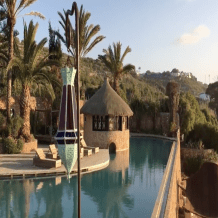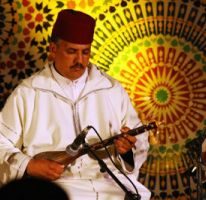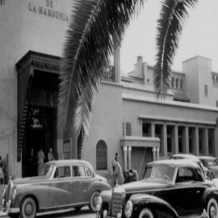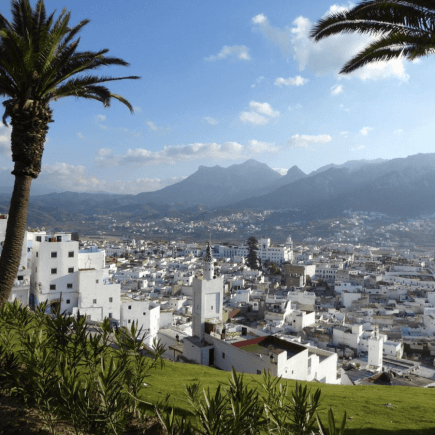
Many families in Tetouan still keep their Spanish last names. Travelers interested in exploring Tetouan on a one-day tour can do so from Tanger Med or the Port of Tangier when arriving by cruise ship.
Tetouan is fondly nicknamed the White Dove, Little Jerusalem, and most symbolically, the Daughter of Granada.
The city of Tetouan is well situated in the North of Morocco, along the Mediterranean Sea, and is one of the easiest entry points into Europe. Tetouan has historically been the region most influenced by the Spanish. The French protectorate was established in 1912 with the Treaty of Fez and was respected throughout most of Morocco with the exception of Tangier. The region of Northern Morocco was placed under the Spanish domain in the 1912 treaty established between France and Spain and a year later Francisco Franco made Tetouan his headquarters.
Although Tetouan was originally a Roman settlement of Tamuda, inhabited by the Idrisid dynasty in the 9th century and the Marinid dynasty in 1492, the Moorish Andalusian refugees populated Tetouan after the Reconquista. There was a lot of crossover between the Moors from Morocco and Spain, even the name Andalucia comes from the Arabic word, El Andaluz. In the 1860s, the Spanish officially marked their territory on Morocco when Spanish troops captured Tetouan.
The proximity of Northern Morocco to Spain has also played a role in creating a region of Morocco with clear indications the Spanish were there. This can be found in design, food, and architecture throughout Morocco’s Northern cities of Tangier, Tetouan, and Chefchaouen. It is Tetouan, however, located 60 kilometers south of Tangier, which has the most prominent Andalusian architecture and culture.
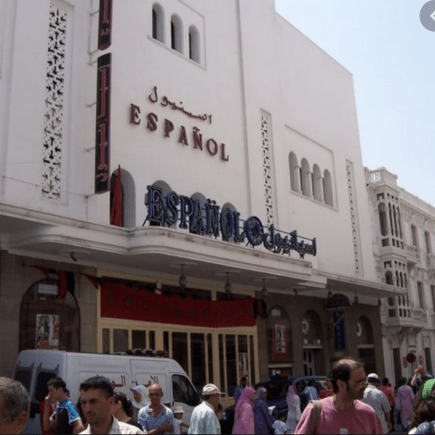
The Tetouan of today is still said to retain its Spanish influence.
Mohammed Ave is the mirror image of a whitewashed Andalucian street from Seville or Granada – a church, libraries, pastelerias selling milo de Flores, tapa bars serving bocadillas, apartments with balconies hanging laundry, the Spanish Institute El Cervantes, and the Spanish Consulate can all be found on Mohammed Avenue and surrounding streets.
Tetouan’s Kasbah is located in what is said to be Morocco’s smallest medina, however, the five kilometers of the ancient historic wall are considered the most artistic and charming throughout Morocco. Tetouan is arguably Morocco’s most important art center. Over the centuries, Ottman, Rifean, and European influences rippled through the city.
Tetouan was also a trading town, intellectual center, and place for the establishment of commercial and artisan work, especially mosques and zaouïas.
It is famous for the school of arts and crafts (Dar Sanaa) and its National Institute of Fine Arts. The city of Tetouan has 7 famous gates historically used as orientation markers to pilgrimage to nearby towns like Cueta, today they are useful to orientate yourself in the medina and discover the traces of Little Spain in Tetouan: Spanish style wrought iron gates, names of streets written in Spanish, and Spanish eateries.
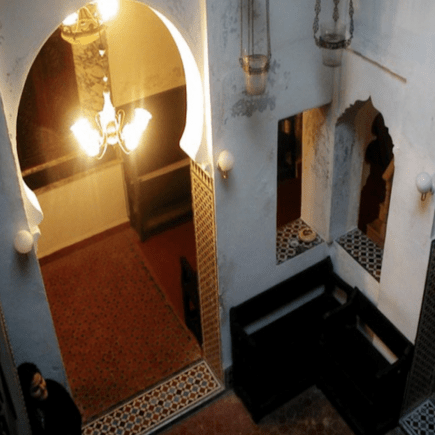
A Tetouan Guided Tour of this UNESCO City:
• Morning departure from your hotel in Tangier or the Tangier Port.
• Begin your Tetouan tour with a visit to the Big Mosque, the Spanish Cathedral, Babu Saidi, the Kasbah, the Medina, and Hassan II Square. Then tour the old Royal Palace, a 17th-century building, at Place Hassan II. Hassan II Square is a reflection of the Hispano-Moresque architecture of Tetouan. The palace is closed to public entry but its main ornate gate Bab Er-Rouah is magnificent. Place Hassan II, where the old and new town meet, is the dynamic heart of Tetouan.
• Next, explore Tetouan’s old medina, a UNESCO World Heritage site. The old medina in Tetouan was once a pirate hub and the capital of Spain during colonial times. The Romans destroyed Tetouan and it was repopulated in the 16th century. Tetouan was a refuge for Jews, Moors, and Moriscos who escaped the Spanish inquisition, and many people in the city still speak Spanish.
• Lunch in Tetouan of local Moroccan fare and then explore Tetouan’s winding streets and alleys on your way to the fort.
• Visit the Jewish mellah, the Berber market, and the Andalusian sector. The Jews of Tetouan once lived in its mellah that was separated from the rest of the town by gates that were closed at night. Tetouan was once home to an important Sephardic Jewish community, which immigrated from Spain after the Reconquista and the Spanish Inquisition. This Jewish Sephardic community spoke a form of Judeo-Spanish known as Haketia. There are very few Jews left in Tetouan today. Option to explore the Jewish synagogue and cemetery.
• End the day with a visit to the Tetouan Archaeology Museum with curated exhibits of Roman relics, artifacts, and mosaics from Lixus.
• Return to your hotel or the Tangier Port


